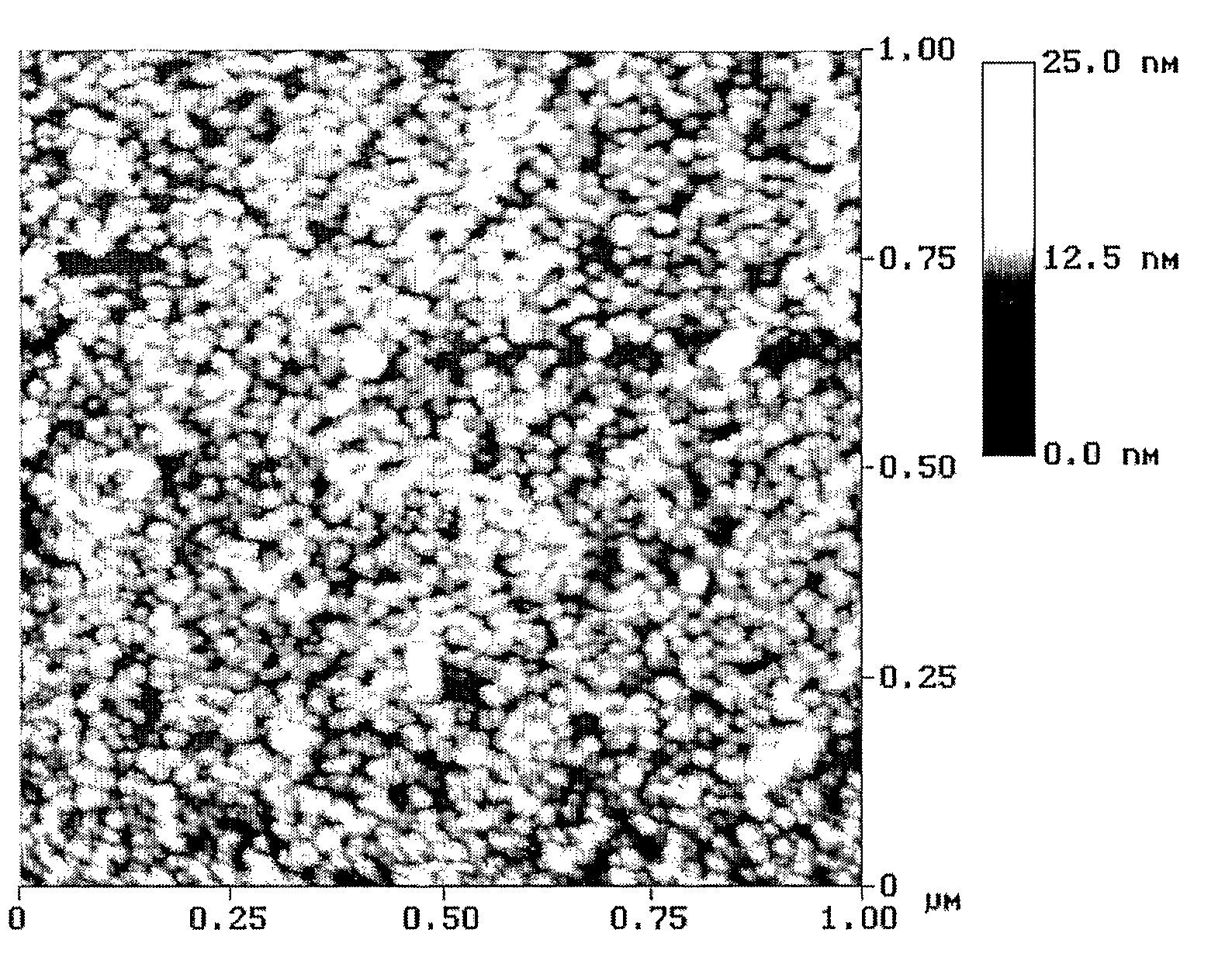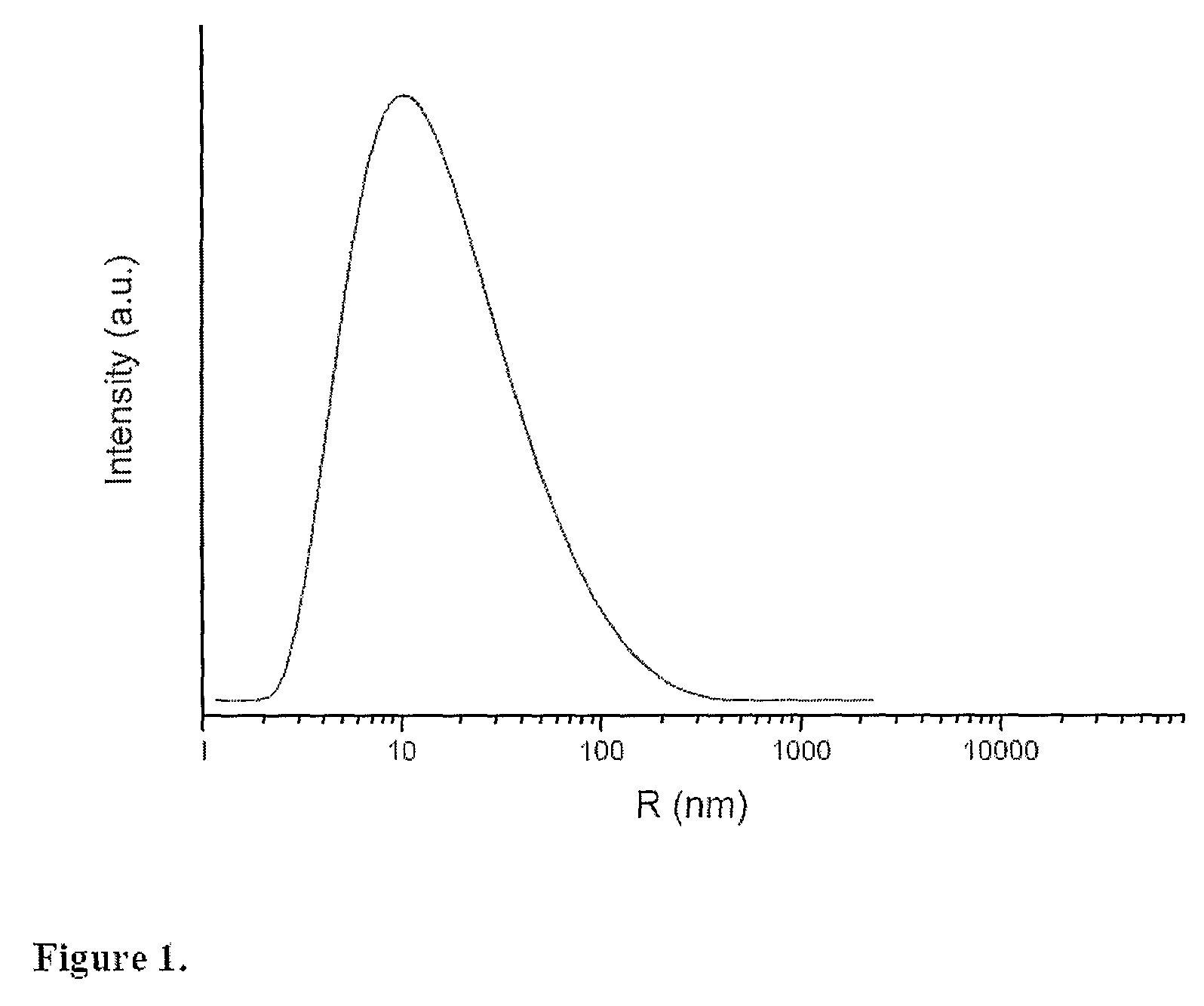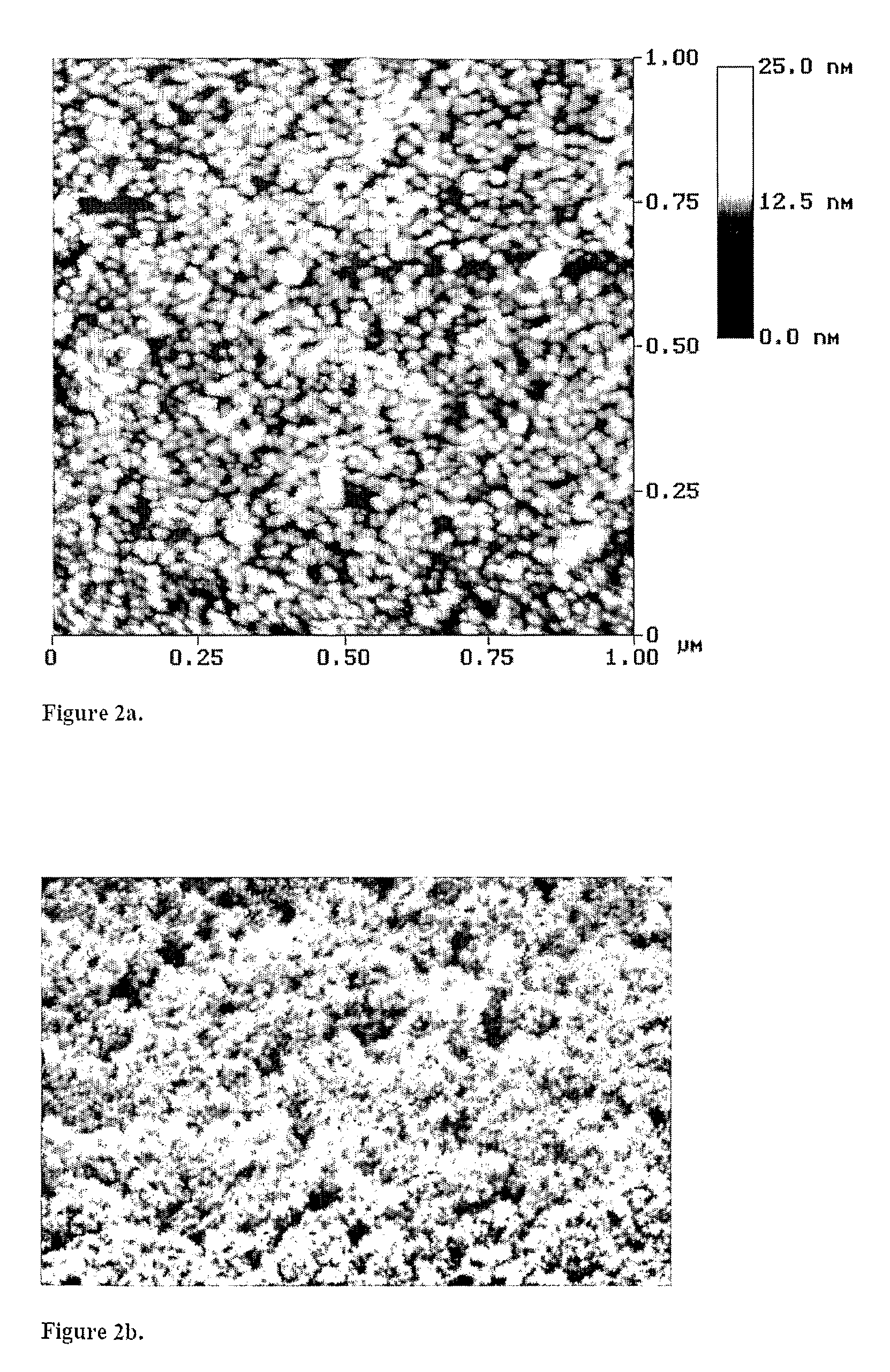Modified Nanostructured Titania Materials and Methods of Manufacture
a titania material and nanostructure technology, applied in the field of photocatalytic and photoactive materials, can solve the problems of reducing the economic incentives to produce materials at a large-scale industrial, difficult to effectively achieve simultaneous control of precursor compounds (typically metal alkoxide) hydrolysis and sol condensation reactions, and the actual control of colloidal suspensions requires a high level of technical skill, so as to achieve accurate control of size, high homogeneity of size, and effective complexation
- Summary
- Abstract
- Description
- Claims
- Application Information
AI Technical Summary
Benefits of technology
Problems solved by technology
Method used
Image
Examples
example 1
Preparation of Modified Titania Nanostructured Materials Via a sol-gel Method in an Aqueous Medium. Combination with Deposition of an Aqueous Paste Via Dip-Coating and Doctor-Blade Techniques for the Development of Titania Nanostructured Films
[0081]A solution of the titania precursor, tetrabutylorthotitanate 15% v / v, is added to 100 mL of an acidic (below pH 4) aqueous solution (inorganic acid such as HNO3 or organic such as HCOOH, approximately 1.5% v / v) under intense stirring. To this solution mixture, an amount of visible light absorbing precursor (i.e. urea, up to 30% w / v) is dissolved so as to enable production of an N-doped titania microparticle. The dispersed mixture is constantly stirred for around 4 hours, resulting in the formation of a colloidal solution.
[0082]Only after the solution is refined, a second solution containing the complexing agent, acetylacetone 4% v / v, is added and the colour of the final solution turns to yellow-orange. Under continuous stirring, to the fi...
example 2
Preparation of Modified Titania Nanostructured Materials Via a sol-gel Method in the Presence of a Cellulose Polymeric Matrix. Combination with Deposition Via the Doctor Blade Technique for the Development of Nanostructured Titania Films.
[0088]A 1% solution w / v was prepared of ethyl-cellulose dissolved in toluene at 60° C. (solution A). In a separate container, a solution of appropriate amount of the visible light adsorbing precursor urea (2.0M) and a titania precursor, titanium isopropoxide (0.5M), are mixed in toluene as the organic solvent (solution B).
[0089]Solutions A and B are cooled to 25° C. and then they are mixed together under stirring. The final solution should have a [Ti(IV)] concentration ranging from 0.1 to 0.5M and cellulose content ranging from 0.1% w / v up to 4.0% w / v. The use of two different solutions that are mixed together is justified by the necessity for a homogeneous interaction between the precursor reagents and the cellulose polymer. Abrupt addition of the ...
example 3
Preparation of Nanostructured N-doped Titania Aqueous Pastes. Combination with Deposition Via Screen-Printing Technique and Doctor-Blade Techniques for the Development of Nanocrystalline Titanium Dioxide Films
[0093]The required quantity (Polyethylene glycol-PEG) or its derivative [e.g. methoxy-polyethylene glycol, activated or modified methopolyethylene glycol, ethers, polyethylene glycol) is dissolved in water at room temperature, in order to result an aqueous solution of accurate concentration (i.e. 30% w / w), Solution 1.
[0094]When the solution 1 becomes a transparent solution, an equal amount of titanium (IV) oxide nano-powder (i.e. N-doped titania nanoparticles prepared following the previous examples) is added under vigorous stirring, Suspension 2.
[0095]The Suspension 2 is put into a sonicator for 30 minutes and the final mixture constitutes the titania paste. The concentration of PEG and to titanium (IV) oxide range from 10% up to 50% and 50% up to 10% respectively. The molecul...
PUM
| Property | Measurement | Unit |
|---|---|---|
| Fraction | aaaaa | aaaaa |
| Fraction | aaaaa | aaaaa |
| Fraction | aaaaa | aaaaa |
Abstract
Description
Claims
Application Information
 Login to View More
Login to View More - R&D
- Intellectual Property
- Life Sciences
- Materials
- Tech Scout
- Unparalleled Data Quality
- Higher Quality Content
- 60% Fewer Hallucinations
Browse by: Latest US Patents, China's latest patents, Technical Efficacy Thesaurus, Application Domain, Technology Topic, Popular Technical Reports.
© 2025 PatSnap. All rights reserved.Legal|Privacy policy|Modern Slavery Act Transparency Statement|Sitemap|About US| Contact US: help@patsnap.com



